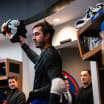"We will be ready to open up on Monday," Isles President and GM Lou Lamoriello said. "We have satisfied all the protocols, checked all the boxes with references to the facility, the medical part and the testing part of it. We are ready. As far as how many players will be coming or when they will start, I could not give that answer yet. We will make it available to the players."
NHL RETURN TO PLAY PLAN
RETURN TO PLAY RESOURCES
Playoff Seeding Info
Lamoriello Supports NHL Plan
NHL Return to Play Plan
Draft Lottery Procedure
Lamoriello said that approximately one third of the players are on Long Island and that he will contact the whole team over the weekend. Lamoriello stressed that all preparations have been made with regards to the safety of the players and staff. Per a memo sent by the NHL on May 24, clubs are recommended to continue testing on an ongoing basis.
"The preparation has been extremely diligent," Lamoriello said. "This is certainly with consultation of outside consultants, infectious disease experts, medical doctors, all of the above, all of the different protocols we have as far as number of players, setup of locker rooms, the time frame between crossing over. There's an extensive amount of detail that will have to be followed."
For many of the Islanders, Monday will be the first opportunity to skate since the NHL's pause on March 12. While players have maintained conditioning through off-ice workouts, Peloton rides and roller blading, there's no substitute for getting on the ice. Once players begin training at the team facility, they are not permitted to train elsewhere.
Per the league, Phase 2 workouts are not intended to replace training camp, which is scheduled to begin in early July. The workouts do mark an encouraging step in the NHL's Return to Play Plan.
"Even if a player decides he doesn't want to start skating Monday Tuesday or Wednesday at least he knows he has the option and there's a comfortability with that," Lamoriello said.
"It's all going to be individual, unique and it's all voluntary," Lamoriello added. "What you do is just make available what you can make available, continue to communicate with them, making sure they are safe and healthy and all of the above. When they are comfortable to come back, we'll be ready for them."



















